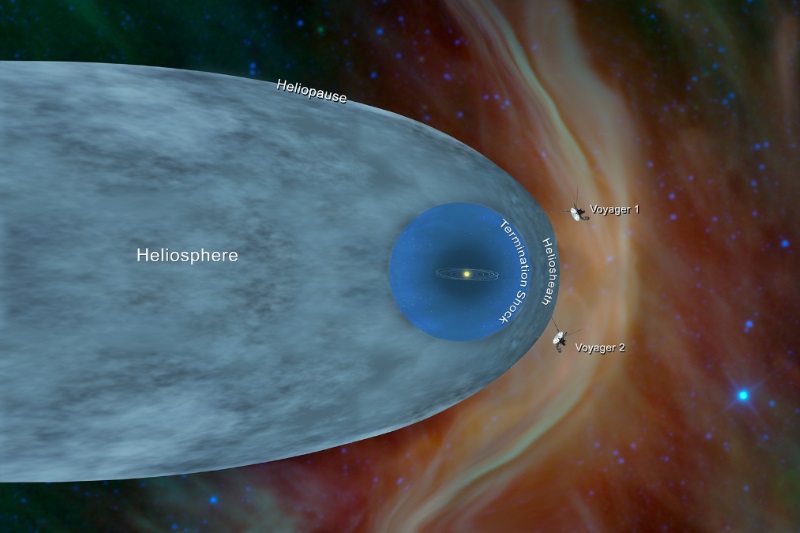- Sponsored -
NASA’s Voyager 2 probe has crossed our Solar System after record 41 years

For only the second time in history, a man-made object has crossed the solar system and entered into interstellar space.
- Sponsored -
NASA on Tuesday announced that its Voyager 2 spacecraft has now exited the heliosphere – the protective bubble composed of plasma and magnetic fields created by the sun, which covers its planets.
The object has now reached the space between the stars, which is more than 18 billion kilometres from earth, said the aerospace experts.
“For me, this is an extremely exciting time for the history of space exploration,” NASA astrophysicist Georgia Denolfo was quoted as saying by Indiatimes at a press conference. “We’re able to look at the galaxy through the clouded lens of our heliosphere, and now we can take a step outside with Voyager.”
“Within the heliosphere, the solar wind is the strongest source of particles, whereas cosmic rays take over outside that bubble. This line of control is called the heliopause, and the Voyager 2 passed it on November 5, of which we just received confirmation from the craft.”
Voyager 1 was the first ever human-made object to cross the heliopause when it did so in 2012. According to Xinhua, Voyager 2 was launched in 1977, almost 16 days before Voyager 1 was launched. But the named them this way because Voyager 1 was launched on a shorter path and it was known that it would emerge first.
Voyager 2 is also NASA’s longest-running mission, having been active for 41 years, 3 months and 20 days till date.
“I think we’re all happy and relieved that the Voyager probes have both operated long enough to make it past this milestone,” said Suzanne Dodd, NASA’s project manager for the Voyager program. “This is what we’ve all been waiting for. Now we’re looking forward to what we’ll be able to learn from having both probes outside the heliopause.”
But according to reports, both the voyagers are yet to cross the solar system entirely as the boundary of the solar system is considered to be beyond the outer edge of Oort cloud, which may take another 30,000 years to cross.
Also read: NASA’s InSight spacecraft lands on Mars; Tweets and sends first photo
- Sponsored -
